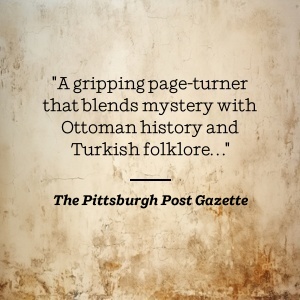

Full description not available



Y**E
tremendous writer
As an American who had lived in Turkey as a young man I have always been fascinated by that beautiful, complex country. I still am. Wonderful book, by a fabulous writer.
J**S
An Ode to architects and Istanbul
The Architect’s Apprentice, Elif Shafak, 2014During the 16th century, the Ottoman Empire reached the apex of its territorial and cultural expansion across the Mediterranean and European continent. Istanbul was the site of an architectural renaissance where, during that period, multiple dozens of mosques, palaces, schools, aqueducts, bridges were constructed. The artistic genius behind this plethora of building can be almost totally ascribed to the 50 year career of Mimar Sinan as royal architect to three Sultans including Suleyman the Magnificent.It is into this time and place that Elif Shafak sets her historical novel. The story is related through a 12-year-old Indian boy, Jahan, who comes to the Sultan’s palace as a mahout or animal handler accompanying a baby white elephant, Chota, given as a gift to the Sultan from the Mogul emperor in Agra India. With his unusual white elephant, Jahan attracts attention from very elite personages within the royal place including Suleyman’s daughter, the royal princess, Mihrimah, for whom Jahan immediately develops a romantic fascination. As Chota matures, the Sultan decides to use the elephant instead of a horse in royal parades and events. Jahan and his elephant also come to the attention of Sinan, the royal architect, for carrying heavy loads in his construction projects. Sinan sees a potential intelligence in Jahan and decides to send him to school to train as an architectural apprentice. As we follow Jahan’s career as he becomes one of four apprentices, he works with Sinan on projects such as the magnificent Mosque of Suleimaniye and in the process much is revealed as to the workings of the royal palace and its inner intrigues.As any architect knows public works projects are intensely political and in this regard the politics of the Sultan’s court were especially treacherous. Jahan comes to this realization early in his residence in the royal menagerie within the palace. When he first arrives the transition of power from the former Sultan to Suleyman had just occurred. Noticing disquiet among animals in the menagerie he decides to investigate what was causing the disturbance, enters surreptitiously into the palace and comes across the multiple murders of Suleymans brothers, executed to abrogate any of their claims to the throne. Jahan learns personally that being on the wrong side of an argument with the Grand Vizier about a project, in this case an aqueduct, can land you in the royal dungeon. The portrait the book paints of Sinan rings true in this regard because we see him as not only an architectural genius but also as a consummate politician who deftly navigates the treacherous palace political waters and survives three Sultans and 50 years in his royal position. As Jahan relates: “Jahan understood his master’s secret resided not in his toughness, for he was not tough, nor in his indestructibility, for he was not indestructible, but in his ability to adapt to change and calamity, and to rebuild himself again and again, out of the ruins.…. Sinan was made of flowing water, when anything blocked his course, he would flow under, around, above it, however he could; he found his way through the cracks and kept flowing forward.” Great advice not only for an architect but maybe also for a politician and for that matter anybody else.During the construction of the mosque of Suleymaniye, this dialogue occurs between Sinan and Jahan: “The mosque is wearing us out, Jahan said. Sinan grew pensive. You’ve noticed it… Think of a baby in the womb. She lives off her mother and tires her. While we deliver a building, we are like the mother. Once the baby is born, we shall be the happiest souls…. We forget how it felt the last time. Again like a mother. Sinan paused unsure what to say the next thing. But some births are harder than others. Master: Are you telling me what we create can kill us? What we create can weaken us, rarely does it kill us.”This book is in a sense an ode to architects as Shafak describes Jahan’ reaction at the completion of the mosque of: “Now as he stood admiring the dome, they had built on four giant piers, seeing it for the thousandth time but also seeing it anew, he felt the same thing. The dome had blended with the firmament above. He fell to his knees, without a care as to who might be watching him. He lay down on the carpet, eyes closed, arms and legs open wide, once again the boy under the birch trees. Alone in the mosque, only a dot in this vast expanse, Jahan could only think of the world as an enormous building site. While the master and the apprentices had been raising this this mosque, the universe had been constructing their fate. Never before had he thought of God as an architect. Christians, Jews, Muslims, Zoroastrians and people of myriad faiths and creeds lived under the same invisible dome. For the eye that could see, architecture was everywhere.”Good historical fiction delivers us to a place and time we will never visit, allows us to vicariously experience through its characters a life we can never live. Like the novels of Robert Harris, this book accomplishes this magic. Istanbul is and has been a nexus point between the Black Sea and the Mediterranean for almost two millennium, a connection between east and west and there resides much of the mystery and fascination of the city for it really is a melting point of empires, religions, races and cultures. In a sense this book is an ode to the city of Istanbul with all it’s cultural and artistic diversity told in beautiful prose. Descriptive at times but salted with intrigue and plot surprises. I came across Shafak’s writing in her latest book, “The Island Of Missing Trees”, was really impressed, decided to read one of her earlier works. Didn’t disappoint. JACK
R**M
Engrossing, Enthralling
One of the great pleasures of reading is the ability to be taken away to different places and times. The Architect’s Apprentice does a splendid job in both respects, following the life of a boy/young man who finds himself, along with a white elephant, in the court of Suleiman the Magnificent. The book follows him as he grows, becomes the mahout of the elephant and apprentice to the royal architect, Sinan. Along the way he meets the Sultan’s only daughter, becomes involved in court intrigues, and much more.Ms. Shafak brilliantly creates a world so different from ours (and so similar in some ways as well), and I find it hard to believe that anyone could read this book and not be thoroughly engrossed and enthralled. I admit that it’s sort of a fairy tale, but it’s nonetheless fascinating.I’ll also point out that I started to read this book 10 years ago, when it was first published, and couldn’t get into it. It’s a lesson for avid readers - if at first you don’t succeed, don’t give up. I recently had a similar experience with Demon Copperhead, and I’d like to think I’ve learned my lesson.
M**D
Architect's Apprentice: a fascinating cultural tapestry of medieval Istanbul
As i write this review in July 2015, television is running an advertisement for travel to Turkey, noting that Istanbul is the only city in the world located on two different continents, namely Europe and Asia. Over centuries, this has made the city a unique crossroads, one that has integrated influences from India, China, and the Islamic world to the east and Christian-Judaic Europe to the west.And in no period in Turkish history has the blending of these influences produced a more glorious cultural tapestry than in the medieval centuries of the Ottoman sultanates. Imagine then the possibilities presented to Elif Shafak, one of Turkey's most acclaimed contemporary authors, as she marries in "The Architect's Apprentice" her longtime interests in religion, philosophy, oral storytelling, and architecture in a story that is part political intrigue, part romance, and, above all, part a celebration of Istanbul's history. Shafak's writing is a bit less luminous and significantly less experimental in format than Orhan Pamuk's in "My Name is Red," also a tale of artistic endeavor in medieval Istanbul. Even so, she is a superb stylist with a notably pleasing rhythm to her sentences. All told, this book is a pleasure to read as it provides a sweeping panorama of social life in the Ottoman period. Undoubtedly it will tempt many readers to continue acquainting themselves with both Turkish literature and history.
K**R
Interesting Ottoman History
The parts about actual Ottoman figures were very enlightening. The main character is a clumsily imposed Forrest Gumpian mahout who isn't a very believable or fully realized person. Still, a rather interesting if flawed history.
Trustpilot
1 week ago
4 days ago